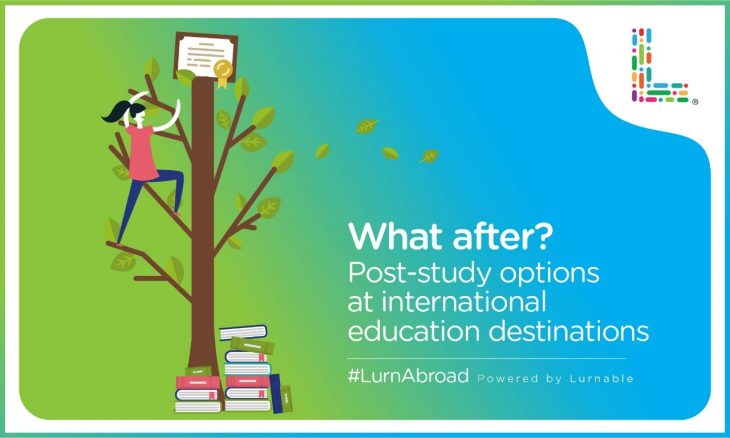Choosing an ideal study abroad destination requires a lot of good thinking. While the quality of education, budget, and accessibility are the top concerns, you cannot undermine the importance of post-study opportunities and work options. It determines your ability to live, work, and eventually settle abroad. So you must consider the career prospects for your subjects and the chances of gaining experience in the country chosen for international education. Let us highlight these prospects for some leading study abroad destinations.
UK
The UK is home to 18 of the world’s top 100 universities, making it one of the choicest destinations for international students. They revere it for the quality of education, while the revamped graduate route launched in April 2021 opens up new opportunities like never before. International students can now stay back for two years after completing graduation to live and search for work. The period extends to three years for those completing Ph.D. at a UK university.
Students with a valid Tier-4 visa and a demonstrable history of visa compliance qualify for the Graduate Route. Further, you must ensure that your institution is registered as an official Higher Education Provider. The graduate route enables you to lool for all types of work as it aims to encourage students to find skilled employment.
It specifically targets STEM graduates, researchers, scientists, and academicians, with the UK government actively looking to recruit them through the newly established Office for Talent. Considering the pandemic crisis, the UK government has assured international students that they remain eligible for post-study benefits even if their courses run online.
USA
The USA has the largest international student community, with thousands of students from overseas applying to the universities here every year. The country offers significant educational options, financial aid opportunities, and positive career prospects for graduates. If you intend to stay back after completing your degree, there are several options. Everything boils down to choosing the one that matches your requirements. Here are the common graduate routes:
- Curricular Practical Training (CPT) for 12 months is available for students with an F-1 student visa.
- Similarly, you can avail Options Practical Training (OPT) for 12 months students with an F-1 student visa.
- The H1B Employer-sponsored visa enables you to stay with an employment offer by a sponsoring employer
- The non-immigrant H-1B visa is available for specialty occupation with a minimum of a bachelor’s degree and an employer to sponsor you.
- The non-immigrant E-1 /E-2 visa allows students from certain countries with a treaty with the U.S. For an E-1 visa, you have to work for an organisation with 51% of its trade between your home country and the U.S. An E-2 visa requires a substantial financial investment.
- The non-immigrant L-1 visa covers students working for a U.S.-based company that wishes to have staff in the country. It is mainly designed for managers and executives.
CANADA
Canada is a sought-after destination as it brings a combination of high education standards and top institutions for all budgets. You have good options to live and work here even after your student visa expires. The post-graduation work permit (PGWP) lets you search for work after graduation from a designated learning institution (DLI). Apart from studying from a DLI, you must also pick an accredited programme to be eligible for the route.
Further, you have to follow strict timelines to apply for a PGWP. You have to apply within 180 days after getting your final results. The application fee is CAD 255 fee, so make sure you get it in process before your student visa expires. The amount of time you can stay to live and work in Canada depends on the duration of your study programme. Here are the facts you need to know:
- You do not qualify for a PGWP for a programme spanning eight months or less.
- For programmes more than eight months and less than two years, a PGWP is equivalent to the length of the programme.
- You get a PGWP of three years for a programme of two years or more.
- Multiple programme completion entitles you to a PGWP combining the length of all eligible programmes longer than eight months.
Those not qualifying for a PGWP can apply for an open work permit or an employer-specific work permit.
AUSTRALIA
Australia has some of the best universities in the world, with seven of them ranking within the top hundred in the QS World University Rankings 2021. Apart from the quality of education, Australia is popular for the attractive post-study opportunities it offers to international students. Those in the fields of medicine, engineering, technology, and finance are at an advantage. You can apply for a 485 post-study work visa within six months after completing your degree in the country. But certificates and diplomas do not make you eligible for the visa.
Essentially, you must choose a degree programme of a minimum of two years or 92 weeks. The institution you choose should have accreditation by the Commonwealth Register of Institutions and Courses for Overseas Students (CRICOS). Once you complete a bachelor’s degree or master’s degree here, you can apply for a two-year post-study work visa. You can get three years to stay on completing a master’s by research. The period is extended to four years for those with a doctoral degree qualification.
Another visa option you can explore is a temporary graduate visa, which is a part of the graduate workstream. It works for graduates with in-demand skills and qualifications, who can contribute positively to the workplace. The temporary graduate visa lets you stay for up to 18 months, and you can have multiple entries into the country during this period. A recent move by the Australian government has adjusted the criteria for post-study work visas due to the Covid crisis. With this, students unable to travel to Australia to continue their studies will not lose their eligibility for a post-study visa.
Now that you have a good understanding of the post-study work options of popular international destinations, you can make a well-informed decision.

If you are considering studying abroad why don’t you discuss your prospects and opportunities with experts at Lurnable’s dedicated study abroad counselling division LurnPathways?





